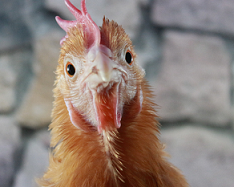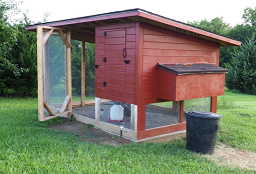
We do our best to protect our livestock from any number of threats. And with a limited warning-time we make decisions for our animals when facing an emergency situation such as an approaching hurricane.
Learning from Survival
Having been through 4 hurricanes in my chicken-keeping experience, I have learned to use a storm’s projected severity to help determine how to prepare my birds for a hurricane. Of course, I am writing as a small, backyard chicken keeper and not to large-scale producers. But large scale producers could adapt some of these options to protect their flock as well.
Approaching storms can change strength and direction after they have made landfall. And no weather report is 100% accurate. However, our best effort is made to secure our livestock with the limited warning-time we have to get ready for an extreme weather event.
Prepare the Coop
There were a few choices for me to protect my chickens in the past. Consequently, which one I chose depended upon the severity of a storm’s winds. Many chicken-keepers, especially large-scale operations, may be in very low-lying areas so flooding would be more of an issue for them than for me. Some small poultry flock owners may have a garage or barn shelter option which I did not have. So I asked myself these 3 questions while watching the weather report to see how severe the winds would be.
The 3 Questions

- Will my “girls” wait out the storm in their coop with food & water and all openings secured? For a Category 1 to 3 storm this is a great option and the one which will cause the least upset for your flock. Birds know bad weather is coming. By keeping them in their familiar place for the duration of the storm, chickens can roost and feel secure in their own coop. During one category 3 storm, my birds even laid their regular number of eggs on the day of the hurricane when left in their own coop. The vent openings were secured with scrap lumber, water and food were provided, and the door latches were reinforced.
- Am I prepared to bring my chickens indoors? If a coming storm is predicted to be a strong category 3 or 4, I might get a couple of large, plastic dog crates and split my flock into 2 or 3 of them. I would also add some wooden dowels for roosts, their feeder, pine shavings, and water dispenser and bring them into the house or a garage. A spare bathroom or laundry room is best if you don’t have a garage- chickens are very messy. Another option was to purchase a small, “All-in-one” coop/run, and tuck it in where the prevailing winds would not blow it away.
- Will I crate all my hens and bring them with us as we evacuate? For a strong Category 5 storm predicted to hit our area directly, I would crate all my birds and either take them with us as we evacuate or I would find a friend with a secure garage where my flock could shelter in their crates for a couple of days.
The Situation
My coop is situated in the northwest corner of my back yard. It is under a few laurel oak trees and half surrounded by saw palmettos, which cut the majority of the prevailing wind. While these oaks are well-pruned and mature, they are not very large trees. The coop is 5-feet by 5-feet square with a solid plank floor and the roof only 3-4-feet tall, sloped like a lean-to. Constructed from oak shipping pallets and 2-inch wood screws, this coop took 6 strong men to move it into position onto concrete blocks. It did not move nor sustain any damage during hurricane Irma.

Plywood and Tie-Down Straps
Chicken coop designs can vary greatly. Securing homemade structures is probably more doable. Leftover wood scraps from the construction can be used to cover openings and beef-up doors. However, many of the pre-made coop kits available today use very thin, soft wood. These also do not hold up to our brutal Florida weather, often needing replacement within a year or two due to rot.
Wind
Securing the coop to the ground is key in high winds. If the tenons on a pre-made coop are rotted there will be no way to strap them down in an emergency. This decay also makes it difficult to move a light-weight pre-made model.
Hand made coop and run designs are a little easier to secure because of their stronger materials used. Tie-down straps used for large sheds are great for securing 2-by-4 constructions to the ground. Low-slung chicken houses will likewise be harder for winds to lift.
An insurance adjuster once told me, “If you can lift it, so can the wind”. That’s important to keep in mind when we batten down for a storm.
Resources:
The Florida State Agricultural Response Team (S.A.R.T) publication, “Florida Disaster Preparedness Guide for Animals and Agriculture” is a handy resource if you have livestock or pets. These booklets are available at our local Indian River County Extension Office. There are numerous information in its pages on types of animals from honeybees and guinea pigs to horses and cattle. With a section on biosecurity, this may be the most comprehensive guide we have available for agricultural preparedness at this time. This guide also has contact information for the University of Florida Veterinarians, Animal Technical Rescue, and the Florida Fish and Wildlife Conservation Commission.
With no available UF publication on Chicken Coop Prep, I have found this GrubblyFarms Blog post for this subject to be a good substitution. You will also get a short list for keeping a first-aid kit for your flock.
 2
2
